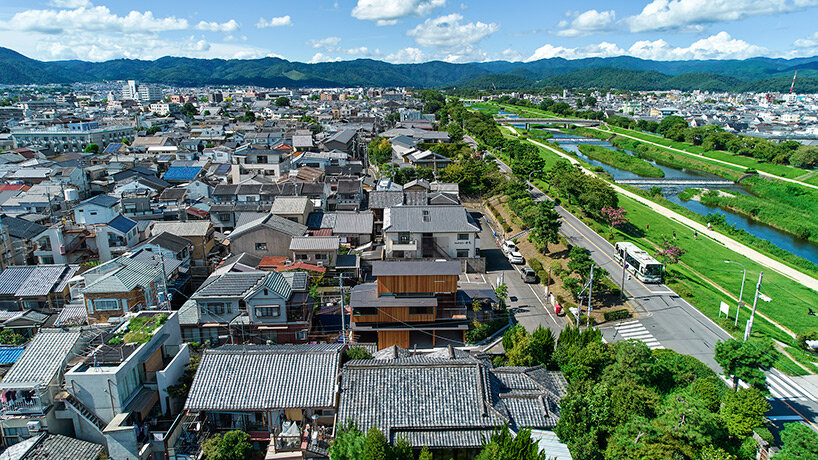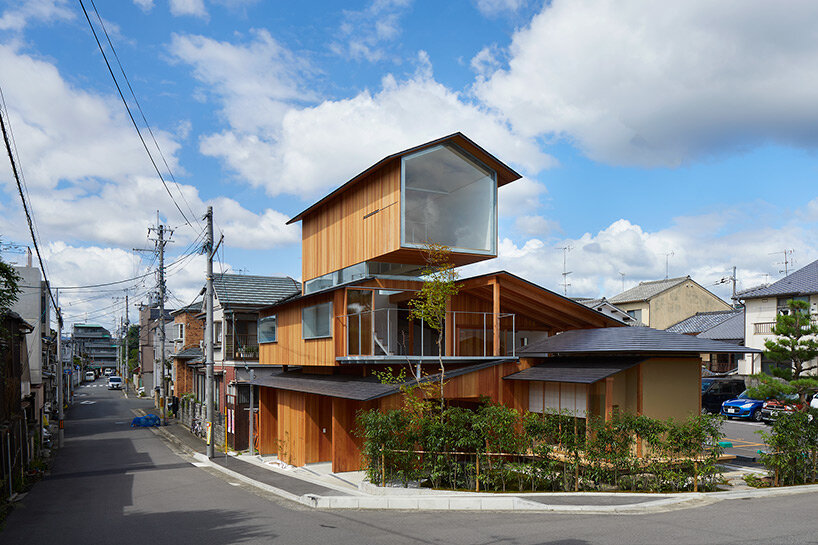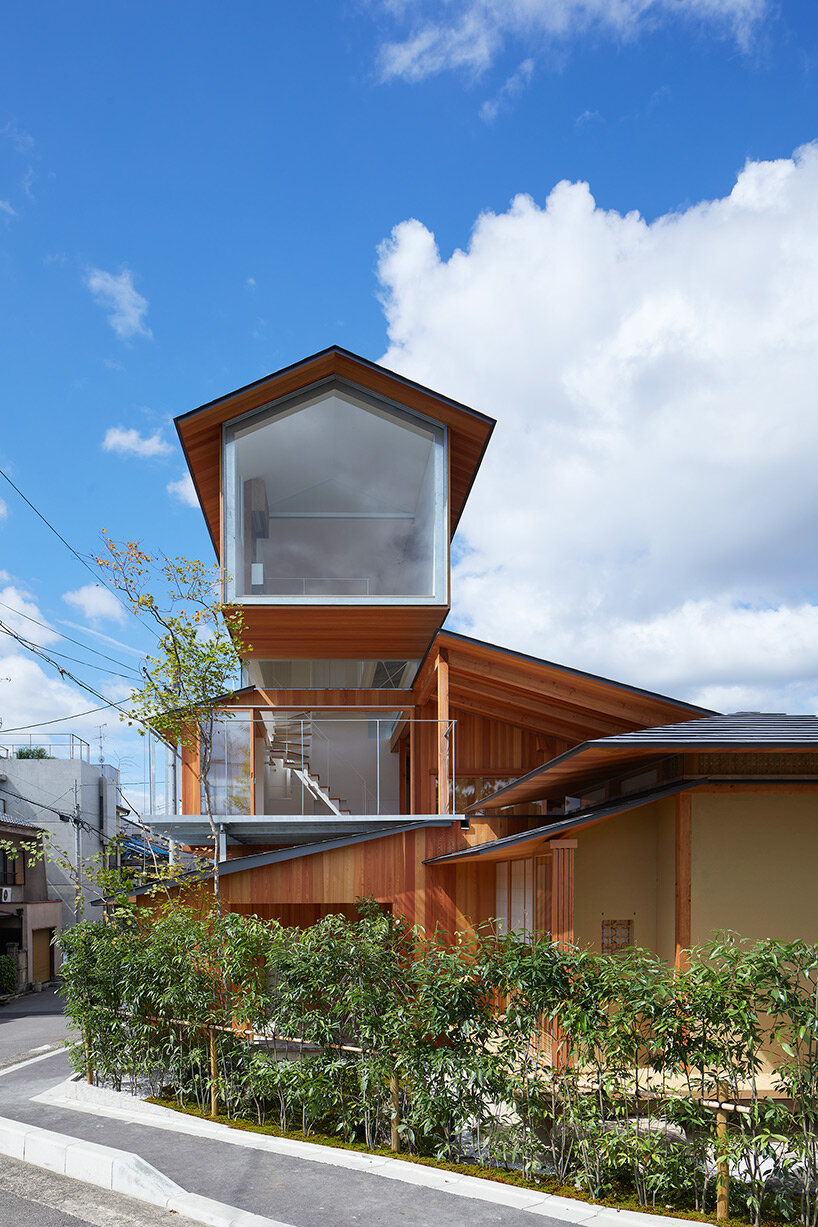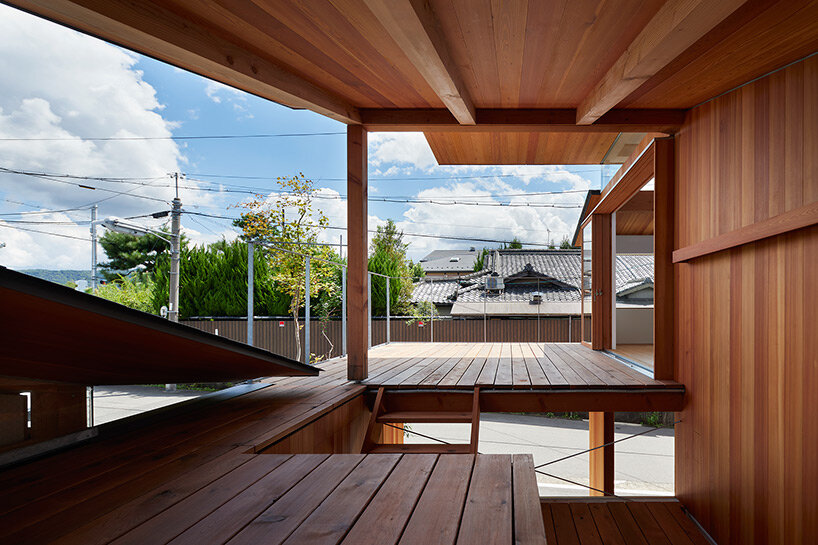tomohiro hata forms house in shimogamo as a cluster of overlapping roofs
tomohiro hata’s house accentuates distinctive kyoto landscape
surrounded by a mixture of traditional townhouses and contemporary buildings, house in shimogamo by tomohiro hata seeks to connect and accentuate this interesting urban landscape in kyoto, japan. the residence takes shape as a collection of smaller wooden structures with separate roofs that grow upward to make use of the available land. each volume is carefully positioned on top of the other, forming an arrangement of extended canopies and terraces, and providing the occupants with a wide selection of open spaces.

all images courtesy of tomohiro hata
shaped as a cluster of smaller separate roofs
I was deeply impressed by the landscape of this place, where roofs of various ages and sizes overlapped each other and blended into the mountainous landscape in the background, in an environment where townhouses, mansions, and modern buildings are mixed, together’ shares tomohiro hata.
to amplify this diverse scenery of intersecting roofs, the architect formed the dwelling as a cluster of multiple smaller volumes, rather than a single structure under a large canopy. the project is loosened by the division of several roofs, blending seamlessly into the area. under each roof, a unique space is created, and at the same time, the synergistic relationship between all these separate spaces becomes apparent and clearly defined.

interconnected semi-open spaces offer variety
thanks to its distinctive configuration, the house incorporates a series of semi-open spaces that are all interconnected. a tea ceremony room, a children’s room, and a ‘doma’ are arranged on the first floor, each one house by its own roof. the tea room connects to the terrace on the second floor, while the kid’s room and ‘doma’ are linked to the dining room and terrace, and so on.
on the second and third floors, the dining room, living room, terrace, and the observation room communicate with each other through the roofs, allowing light and wind to flow in. in the resulting structure, the smaller roofs —as well as the spaces they shelter— collide, melt, and overlap with each other, aiming to create a residence with a variety of living environments and a comfortable relationship between them.






